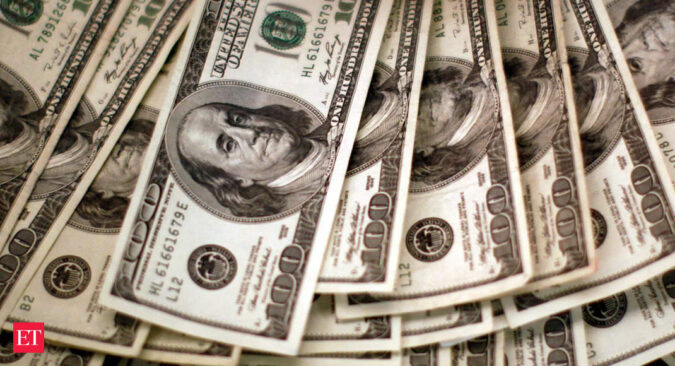Data released in the previous week showed that India’s foreign exchange reserves dropped by $1.49 billion to reach $575.27 billion as of February 3, snapping a three-week rising trend.
In October 2021, the country’s forex kitty had reached an all-time high of USD 645 billion. The reserves have been declining as the central bank deploys the kitty to defend the rupee amid pressures caused majorly by global developments.
India’s foreign currency assets (FCA) fell by $7.11 billion to $500.59 billion. Expressed in dollar terms, the FCA includes the effect of appreciation or depreciation of non-US units like the euro, pound and yen held in the foreign exchange reserves.
Gold reserves fell by $919 million, taking the reserves to $42.86 billion while SDRs fell by $190 million to $18.35 billion.
The Indian rupee declined for the fourth straight week on Friday on concerns over surging U.S. yields, but did not weaken below a key level on likely intervention by the Reserve Bank of India (RBI) in the non-deliverable forward (NDF) market.
The rupee finished the week at 82.83 per dollar, compared with 82.7175 in the previous session. For the week, it was down 0.4%, having traded in a narrow 30 paisa range.However, the rupee’s losses for the week were lesser than that of its Asian peers.
The Reserve Bank of India’s governor recently said that the size of India’s forex reserves is comfortable.
“The size of forex reserves is comfortable and has gone up from $524 billion on October 21, 2022 to $572 billion as on January 13, 2023. Further, India’s external debt ratios are low by international standards. This has enabled the Reserve Bank to eschew measures to control capital flows and take steps to further internationalise the domestic currency, even during episodes of significant capital outflows,” he said.
Referring to the ever depreciating trajectory of the rupee, Das said that the currency’s performance in terms of volatility remained “impressive”.
“For example, the one-month implied volatility of the rupee touched a high of 25 per cent during the global financial crisis on October 10, 2008 and 20 per cent during the taper tantrum period on August 29, 2013. During the Covid-19 pandemic, however, the implied volatility peaked at 10 per cent on March 24, 2020 and has remained well anchored thereafter, despite the uncertainties associated with the war and monetary tightening by major central banks,” he said.
